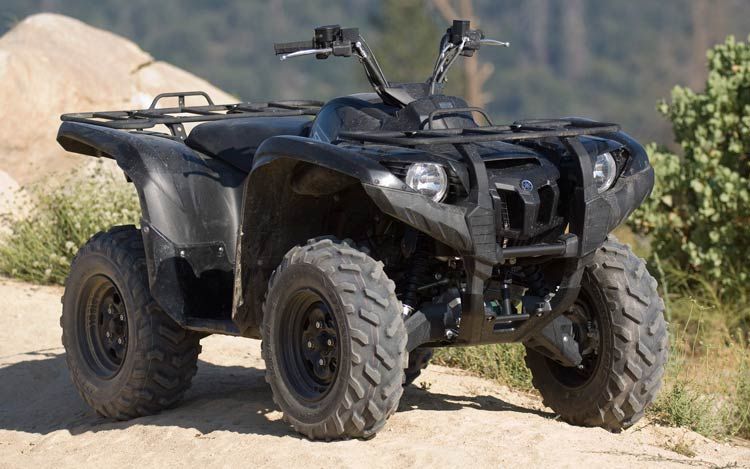Relocating your ATV’s radiator can seem like a big task that may or may not need to be done. From my personal experience with ATV’s, here is my opinion.
Should You Relocate Your Radiator On Your ATV? This depends on what you drive your ATV through. If you drive mostly through mud, then yes you should. You should even relocate your radiator if you drive through deep water because there is typically vegetation floating in the water that could potentially get stuck to the front of your radiator. If you mostly ride dusty trials, then it would not be necessary for you to relocate your radiator because nothing is going to clog it. If your ATV starts to display a “Temperature” light which means that your engine is running hotter than it should, and you know that your radiator is clogged, then you should definitely relocate your radiator.
Deciding on whether or not to relocate you radiator is a big decision. This will drastically change the appearance of your ATV and the installation can be a job. Keep reading and I will help you decide.
The main obvious sign that you should relocate your radiator is if you plan to do extreme mud riding or any mud riding at all. These machines cost too much money to risk permanently damaging the engine from just hitting a few deep mud holes.
Another sign that you may want to relocate your radiator is if your radiator is prone to collecting mud and every time you wash your ATV you notice that your radiator needs cleaning as well. It’s better to be safe than sorry. Go ahead and install one because maybe one day you will be miles away from the parking lot and, only then, your ATV will start to overheat.
Have you ever been riding and your temperature light come on? I have, and it is not a good feeling. You don’t know whether your engine is just running a little hot or if you should keep driving it at all. There’s a good chance that your radiator has some mud or vegetation caked on it. Whenever this happens, air cannot flow through the fins on the radiator which helps cool the coolant down. Almost every ATV has a fan attached to the radiator to help with this when driving at slow speeds but it can’t do its job if there is mud layered on the exterior of the radiator.
There’s a good chance that your radiator has some mud or vegetation caked on it. Whenever this happens, air cannot flow through the fins on the radiator which helps cool the coolant down. Almost every ATV has a fan attached to the radiator to help with this when driving at slow speeds but it can’t do its job if there is mud layered on the exterior of the radiator.
Prevents Over Heating: The main reason people relocate their radiator is to prevent their ATV’s engine from overheating. The radiator contains coolant or antifreeze and this coolant cycles through your ATV’s engine and back up through the radiator. When this happens the coolant gets hot and needs to be cooled back down by air flowing through the fins on the radiator. But if mud is clogging it, the coolant cannot get cooled down enough to perform its job.
Easily Accessible for Cleaning: Another advantage of relocating your radiator is that you are, now, able to keep it clean longer and when it is time for your machines bath, you can clean it with ease.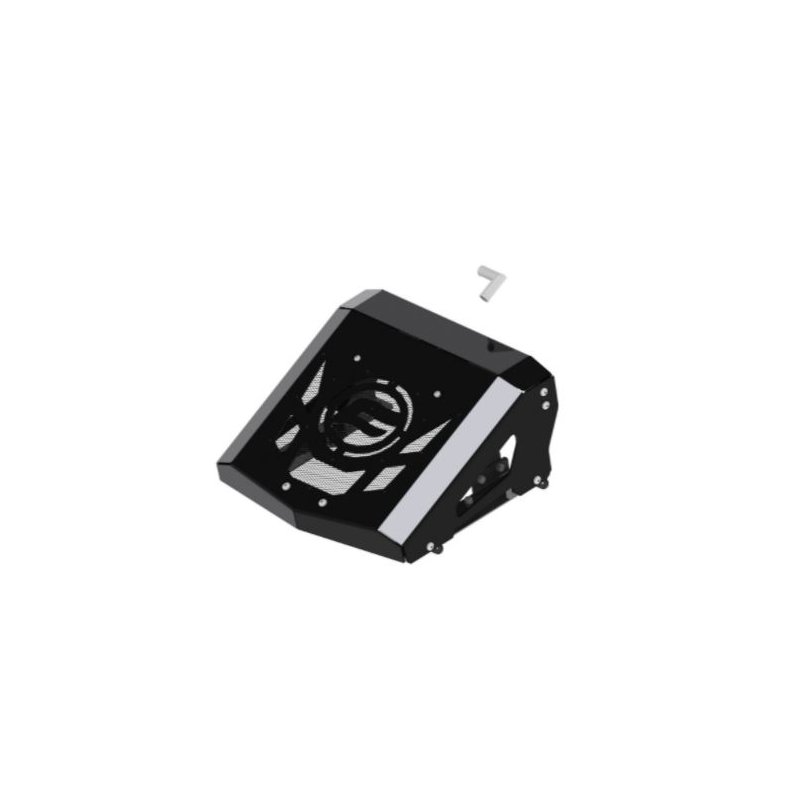 PLEASE NOTE: Do NOT use high pressure to clean your radiator because it may bend or damage the fins. A water hose and a regular nozzle will do the job just fine.
PLEASE NOTE: Do NOT use high pressure to clean your radiator because it may bend or damage the fins. A water hose and a regular nozzle will do the job just fine.
Makes Your ATV Look Better: Relocating your ATV’s radiator will drastically change the appearance of it. Depending on the type of relocation kit you purchase, it can make your ATV look a lot meaner and provide it with a more aggressive look. The reason I say this, is because some ATV's look better with a kit than others. You can also pay someone that has a metal laser cutting machine to create you a custom steel radiator cover which can make for a sweet looking ride.
Disadvantages of Relocating Your ATV's RadiatorTakes Up Space: The main reason people do not install a radiator relocation kit is because it uses up so much space on their front rack. For the hunters, this can prevent hauling deer or installing a nifty gun rack on your front rack. For the mudding guys, like myself, the radiator can limit your options when choosing speakers or light bars for your ATV.
Installation Can Be Difficult: Installing a radiator relocation kit can be quite difficult. I don’t want to go into the details but there will be drilling holes, extending cables and fitting hoses. I would definitely take your time on the install and read the relocation kit instructions very carefully before starting. Like they say, “measure twice, cut once”.
Makes Your ATV Look Worse: Depending on your taste, the kit you go with may give your ATV a weird look and you might be disappointed. I suggest searching your ATV with the exact radiator relocation kit and viewing some pictures before purchasing, even if you have to contact someone to send you some images. Trust me, it will be worth it. I would say 90% of the time, your ATV is going to look better, more aggressive and unstoppable with one of these kits sitting on the front rack.
Most Popular Brands of Radiator Relocation KitsTo conclude this post, if you are currently riding in mud or plan to ride in mud, I would highly suggest relocating your ATV’s radiator to the top of your front rack for the sake of prolonging your engines lifespan.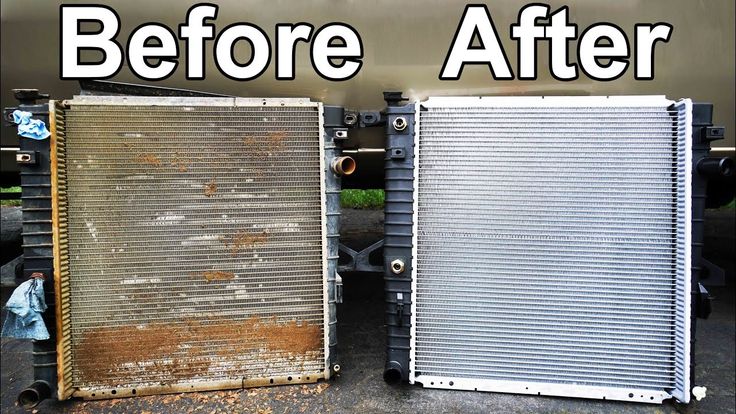 This will give you an extra layer of relief when you get deep into some muddy trails, especially riding by yourself. Despite the work involved for the installation and the space it needs on your front rack, this accessory will pay for itself time and time again.
This will give you an extra layer of relief when you get deep into some muddy trails, especially riding by yourself. Despite the work involved for the installation and the space it needs on your front rack, this accessory will pay for itself time and time again.
Shop Filter
Showing 1–25 of 9223372036854775807 results
Sort by popularitySort by average ratingSort by latestSort by price: low to highSort by price: high to lowShop For The Industry Leading ATV Rad Relocate Kits. Here we Provide Full Bumper Kits and Also Relocate Housings From The Best Manufactures and Vendors in The USA. Compare From The Industry Leading Products Below, Because We Offer The Best American Company Options All In One Location.
We Continue To Add New ATV Rad Relocate Kits and Upgrades Every Day To Be The Leader In Parts and Accessories Options, So You Can Customize Your Vehicle The Way You Want.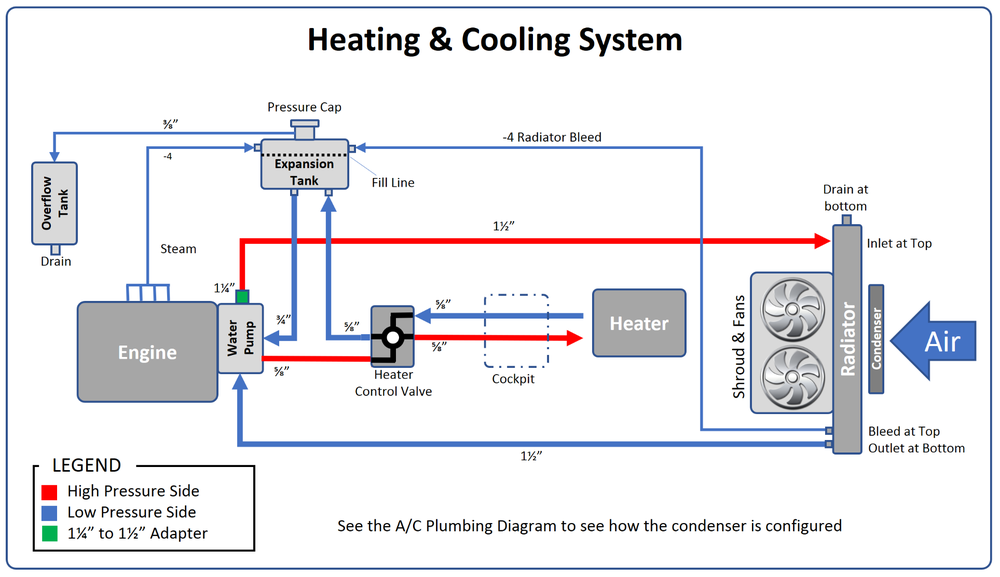 We Always Give Free Shipping, Cash Back Rewards with Our Loyalty Program and Financing Options to Make American Off-Roads Your First Stop for Upgrading Your Off-Road Machine.
We Always Give Free Shipping, Cash Back Rewards with Our Loyalty Program and Financing Options to Make American Off-Roads Your First Stop for Upgrading Your Off-Road Machine.
ATV Rad Relocate
From: $329.99
View Product
ATV Rad Relocate
From: $329.99
View Product
ATV Rad Relocate
From: $329.99
View Product
ATV Rad Relocate
$334.99
View Product
ATV Rad Relocate
From: $319.99
View Product
ATV Rad Relocate
$329. 99
99
View Product
ATV Rad Relocate
$329.99
View Product
ATV Rad Relocate
$329.99
View Product
ATV Rad Relocate
$329.99
View Product
ATV Rad Relocate
$329.99
View Product
ATV Rad Relocate
$349.99
View Product
ATV Bumpers
$999.99
View Product
ATV Bumpers
$1,049. 99
99
View Product
ATV Bumpers
$979.99
View Product
The radiator is needed to cool the ATV engine. It is usually located in front under the hood. But sometimes the radiator is brought up - to the place of the front cargo area. This is done to pass through water barriers and deep mud.
There are three reasons why the top position is better on wet routes - we will tell you about them.
The radiator is taken out to the top to pass through water obstacles and deep mud
When attempting to drive through water, the radiator becomes clogged with dirt. Because of this, it removes heat worse, and at some point the engine may overheat and stall. Of course, you can force the water on inertia, but if the ATV stops halfway due to an overheated engine, it will be difficult to get it out.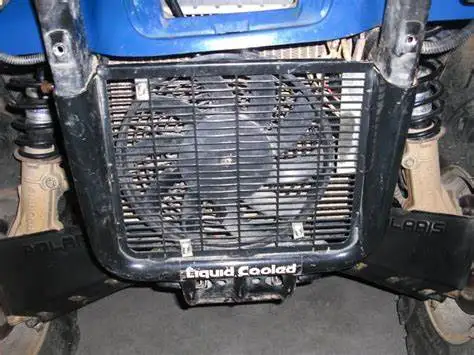
But if the radiator is placed on top, the chance that it will break and the engine will stall is much lower.
Structurally, a radiator is a pipeline inside which antifreeze circulates. For better heat transfer, a fine-mesh mesh is installed over the pipes. And in front of this grid there is another grille with larger cells - it protects the radiator from damage.
Both the outer grille and the radiator mesh can become clogged - silt, algae, dirt. All this must be cleaned after each race so that the radiator continues to cool the engine normally. If dirt is left, it heats up on contact with the engine, dries out and "bakes", turning into a firmly seated lump. It is already more difficult to get rid of lumps of dirt, and there is a risk of damaging the honeycombs themselves.
The standard radiator is difficult and time consuming to clean - in most cases it must be removed. And the radiator placed upstairs is less clogged with dirt and easier to clean.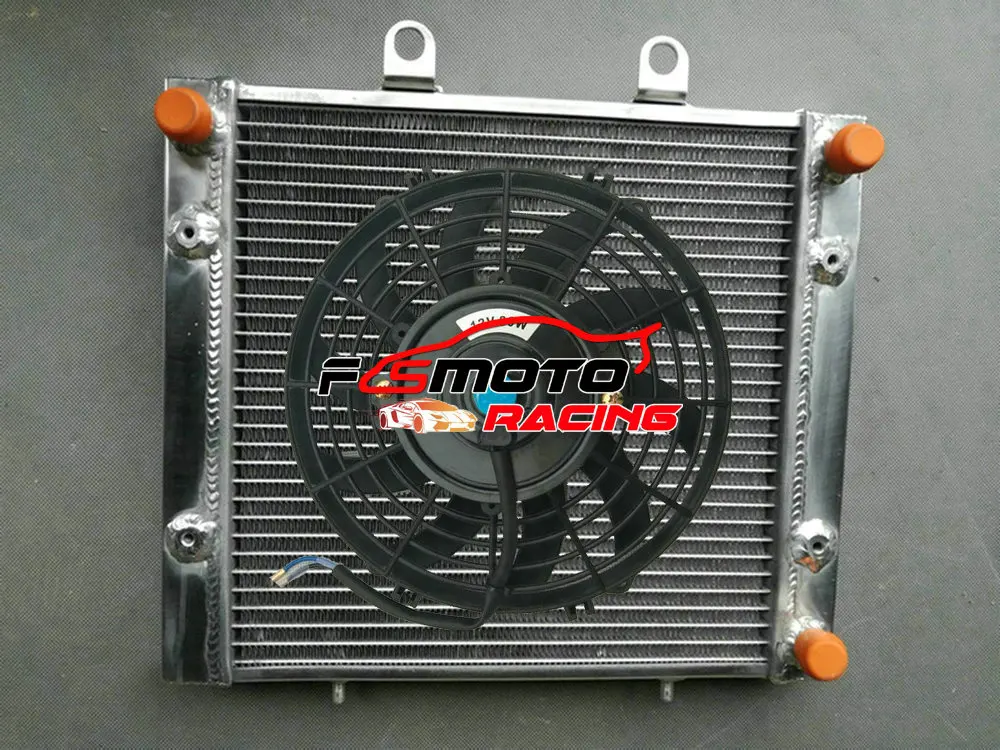
When driving through a ford or mud, you may not notice an obstacle hidden under the surface: a branch, a stump, a large stone. If you run into it with a radiator grill, you can damage thin “honeycombs”. In addition, they can be bent by the pressure of water from a pressure washer, if they are washed too hard from adhering dirt and mud.
Therefore, the removal of the radiator also reduces the chance that it will be damaged during travel or when washing.
Removing the radiator makes it easier to clean the grille, reduces the likelihood of damage and overheating of the engine
Installing branded kits from official dealers does not affect the warranty: it remains. For example, the Chinese manufacturer CFMOTO has stock stems for different models.
If you buy a branded kit and install it yourself correctly, the warranty also remains. An exception is if the warranty explicitly states that it burns out after self-installation of accessories.
An exception is if the warranty explicitly states that it burns out after self-installation of accessories.
But if you install a stem from another manufacturer or homemade, most likely, the warranty will not be preserved.
If you install a branded take-out kit from an authorized dealer, the ATV warranty is preserved
Theoretically, two radiators can be made: one regular, the second additional on top. But in practice this is not done - the standard radiator is simply removed. Otherwise, all the problems listed above will remain. And the weight of the front of the ATV will increase (one radiator can weigh 5-10 kg), because of which there will be a higher chance that it will load.
Radiator offset needed to efficiently drive through fords and deep mud. It simplifies the cleaning of the grille, reduces the chance of damage and overheating of the engine.
If you use a genuine take-out kit and have it installed by an authorized dealer, the ATV will still be under warranty.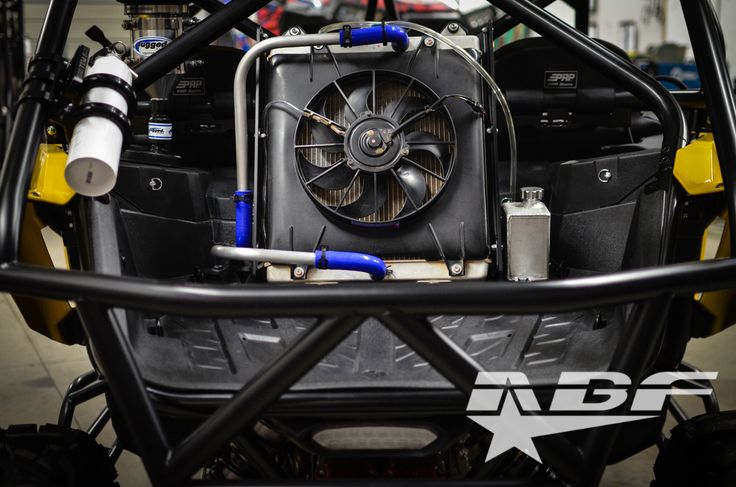
Radiator extensions for ATVs CFMOTO
Read Part 2 of our new article on quad tuning by Sergey Kubanov, Editor-in-Chief of the legendary RedSleds magazine and author of the triptych: “Quad biker's Bible”, “Snowmobile's Bible” and “Dealer's Bible”.
The stock ATV "out of the box" is suitable for riding, that's a fact. The only question is what do you mean by "skating". We understand that a solemn drive around the dacha and a hard break through the thicket to the forest lake are completely opposite entertainments:
It makes no sense to choose a quad in the manufacturer's catalog in the maximum configuration - not all tuning is useful. Of course, we are not talking about useless elements. But it is important to choose the right "additional" for your style, type of riding, region of skiing.
Of course, we are not talking about useless elements. But it is important to choose the right "additional" for your style, type of riding, region of skiing.
Let's go in order.
The solution allows you to avoid rapid contamination of the radiator cells - this saves the quadra from overheating. But at what cost? The removal of the radiator "kills" the front luggage area, exactly twice reduces the area for reasonable zoning of luggage.
Don't believe? When we have two full-fledged sites, we can put back a trunk with things for basic needs: extreme, long parking, repairs, rescue. For operational situations, we will have a front trunk - we can get to it without getting off the ATV.
Removing the radiator is not for everyone. There are two ways to reduce the degree of pollution and reduce the risk of overheating:

There are certain types of riding and types of mud terrain that clog up the radiator faster and in those cases the stem helps. But the irony is that the quad will still overheat, although a little later than on a quad with a regular radiator.
However, there are terrain types without tall grass or sticky black earth. On such tracks, the takeaway is not useful, right? If the racer is not a fan of kneading swamps up to his ears in mud, why does he need a radiator removal? It is enough to put nominal snorkels in order to just cross the river, but it makes no sense to put a radiator offset for the sake of a couple of mud adventures in the season.
We are used to this “default” option without thinking about what we gain and what we lose. We seem to get "protection", but at the same time we reduce the ground clearance by an average of 20-30 mm.